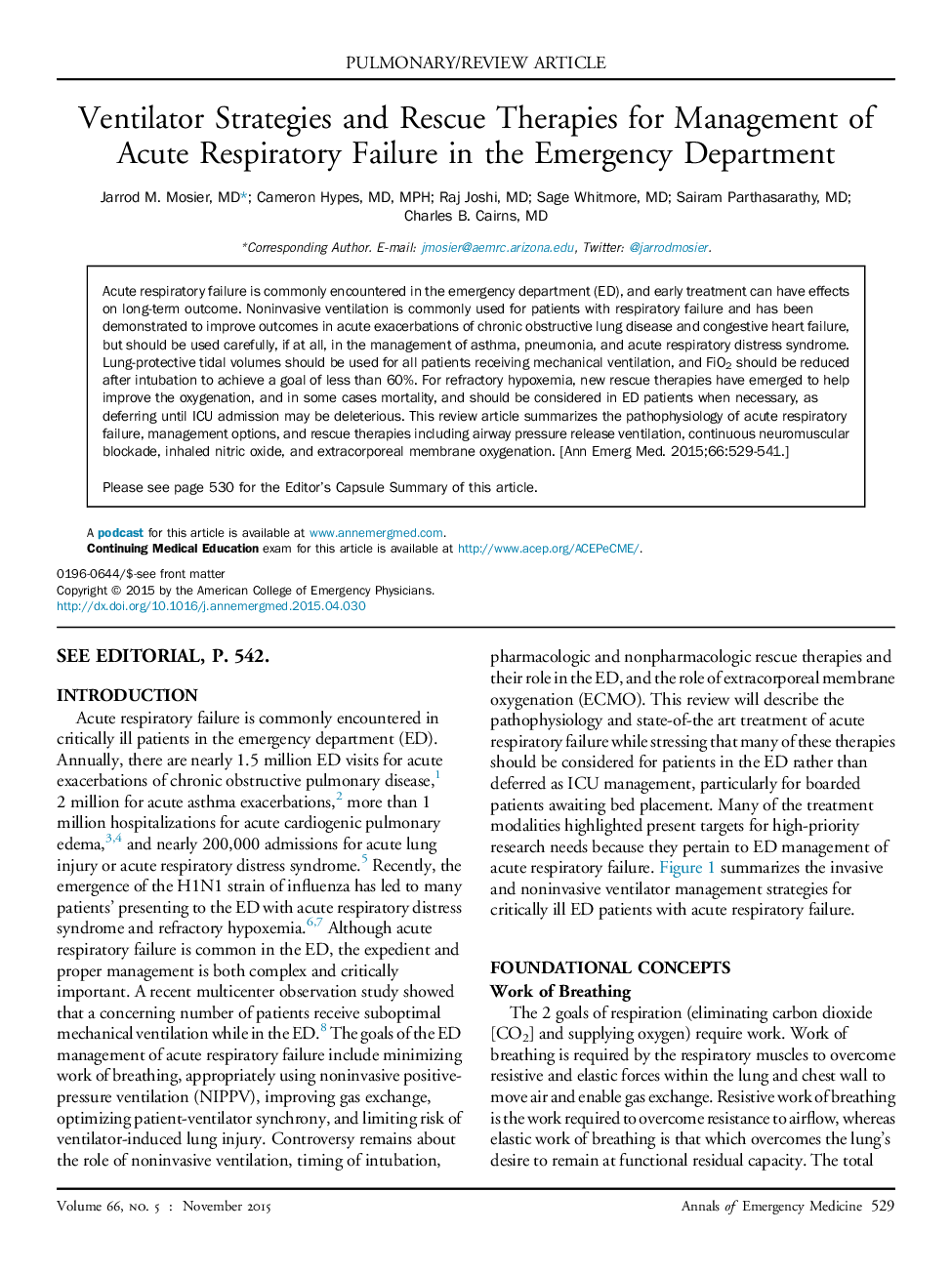| Article ID | Journal | Published Year | Pages | File Type |
|---|---|---|---|---|
| 3228305 | Annals of Emergency Medicine | 2015 | 13 Pages |
Acute respiratory failure is commonly encountered in the emergency department (ED), and early treatment can have effects on long-term outcome. Noninvasive ventilation is commonly used for patients with respiratory failure and has been demonstrated to improve outcomes in acute exacerbations of chronic obstructive lung disease and congestive heart failure, but should be used carefully, if at all, in the management of asthma, pneumonia, and acute respiratory distress syndrome. Lung-protective tidal volumes should be used for all patients receiving mechanical ventilation, and FiO2 should be reduced after intubation to achieve a goal of less than 60%. For refractory hypoxemia, new rescue therapies have emerged to help improve the oxygenation, and in some cases mortality, and should be considered in ED patients when necessary, as deferring until ICU admission may be deleterious. This review article summarizes the pathophysiology of acute respiratory failure, management options, and rescue therapies including airway pressure release ventilation, continuous neuromuscular blockade, inhaled nitric oxide, and extracorporeal membrane oxygenation.
